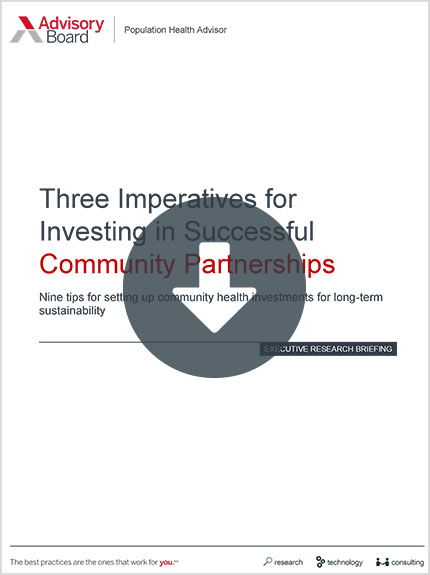In the wake of wildfires that tore through Northern California last year, one remote town is taking on the "monumental" task of rebuilding its entire health care system—and its plan could serve as a model for future rural care delivery, Victoria Colliver reports for Politico.
June 13 webconference: Social Determinants 101
The 2018 Camp Fire
In November 2018, the Camp Fire tore through Paradise, California, killing 85 people and destroying 14,000 homes. The wildfire, which was the largest and most destructive fire in the state's history, consumed several clinics, nursing homes, and the rural community's only hospital. The hospital, Adventist Health Feather River, was badly damaged, but not completely destroyed. The ED remained intact.
Richard Thorp, a physician and president of Paradise Medical Group, said, "I don't think there is a similar instance in the United States where a community has been essentially completely destroyed and had to rebuild."
In fact, after the fire, Paradise had "one of the worst cleanup jobs since 9/11," according to Colliver.
Despite the task ahead, the town is hopeful that a recently approved $19 billion federal disaster assistance bill will provide them with the funds necessary to rebuild their health system.
According to Colliver, California is slated to get up to $12.6 billion in disaster relief funds under the bill, which is now awaiting President Trump's signature.
Rural community sees fire as an opportunity to 'rethink' health care delivery
In the meantime, the town is considering how to develop a new and improved health care system that builds on community-based primary care and telemedicine specialist access, Colliver reports. According to Colliver, if the approach works, "Paradise could become a template for how to deliver health care to rural America."
Brock Slabach, senior VP of the National Rural Health Association, referring to Paradise, said, "They have the really unique perspective right now to create something based on need that can grow in the community as it looks toward the future."
Paradise Medical Group, which before the fire served 10,000 patients at three clinics, just started seeing patients at its surviving clinic. The practice also launched a new virtual care platform, called "PMG Connect." Patients can use the technology to remotely connect with doctors online and via mobile apps.
In addition, Paradise Medical Group is beginning to experiment with home-based care and remote monitoring.
Adventist Health Feather River faces uncertain future
But progress is slower for the town's hospital, and according to Colliver, that has prompted the community to "rethink" its approach to acute care.
Namely, the future of Adventist Health Feather River hospital is uncertain, with state and federal regulations working against the battered hospital's reopening, Collier reports.
At the federal level, Slabach noted that strict federal rules make it challenging for rural communities to rebuild after disasters. Senate Finance Committee Chair Chuck Grassley (R-Iowa) has introduced a bill that would let Medicare reimburse for a hospital-clinic hybrid, but Congress has yet to warm up to the idea, Colliver reports.
At the state level, freestanding EDs are not allowed to operate alone in California, which means that the surviving ED facility can't provide care as is. The California Legislature is currently discussing a bill that would allow the ED to reclaim its medical services and stay open for up to six years, as long as it is under a consolidated license with another Adventist hospital, Colliver reports.
When it comes to opening, hospital spokesperson Jill Kinney said the system is "anxious to provide access," but noted that Adventist has not made any decisions on the hospital's future footprint.
Kinney noted that the fire pushed out physicians and patients whose homes and workplaces were destroyed. "Right now, some of our challenges are we don't know where the population is going to end up," Kinney said. "Are they going to rebuild? Are they coming back? It's really hard to tell what the community will look like" (Colliver, Politico, 6/2; AP/Los Angeles Times, 6/3).June 13 webconference: Social Determinants 101
To effectively manage your patients' care, it's not enough to ask care teams to address their social needs; you also must team up with community-based organizations to provide non-clinical support. Here's how.
Don't miss out on the latest Advisory Board insights
Create your free account to access 1 resource, including the latest research and webinars.
Want access without creating an account?
You have 1 free members-only resource remaining this month.
1 free members-only resources remaining
1 free members-only resources remaining
You've reached your limit of free insights
Become a member to access all of Advisory Board's resources, events, and experts
Never miss out on the latest innovative health care content tailored to you.
Benefits include:
You've reached your limit of free insights
Become a member to access all of Advisory Board's resources, events, and experts
Never miss out on the latest innovative health care content tailored to you.
Benefits include:
This content is available through your Curated Research partnership with Advisory Board. Click on ‘view this resource’ to read the full piece
Email ask@advisory.com to learn more
Click on ‘Become a Member’ to learn about the benefits of a Full-Access partnership with Advisory Board
Never miss out on the latest innovative health care content tailored to you.
Benefits Include:
This is for members only. Learn more.
Click on ‘Become a Member’ to learn about the benefits of a Full-Access partnership with Advisory Board
Never miss out on the latest innovative health care content tailored to you.


